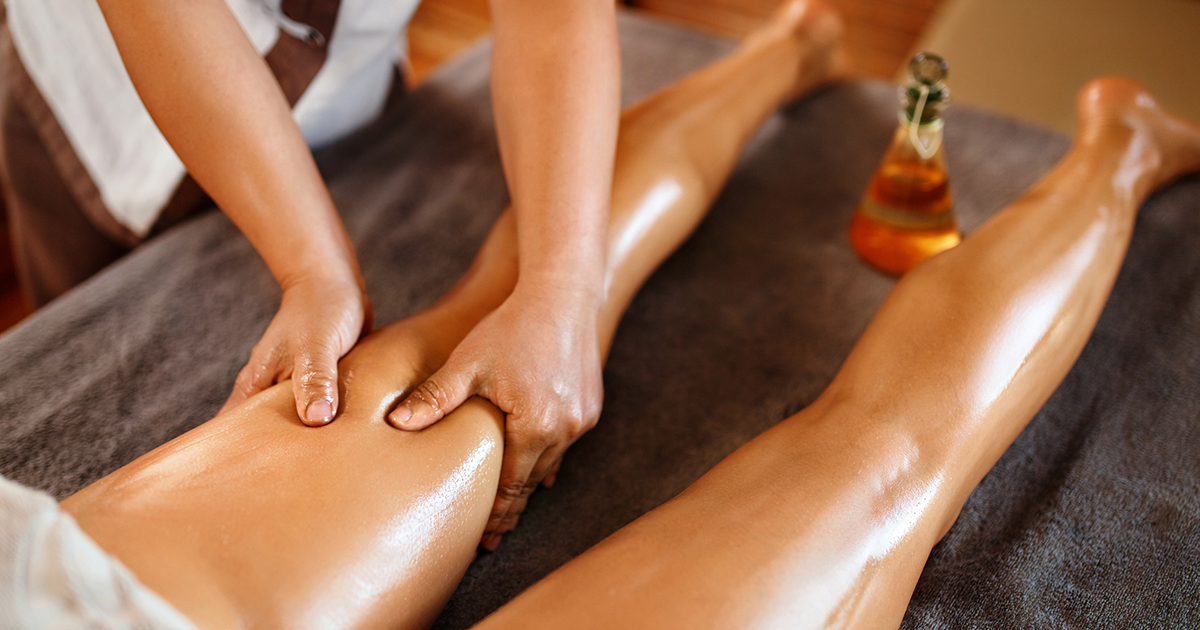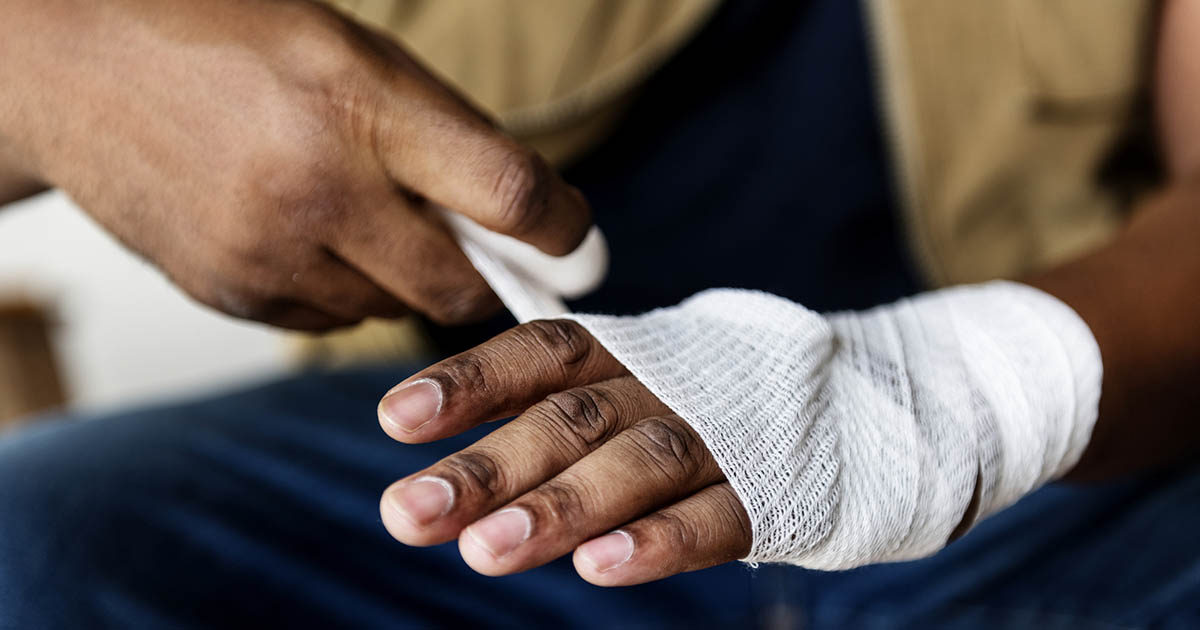How To Effectively Treat Lymphedema
Lymphedema is a condition that occurs when one or more limbs swell. Some individuals find both of their legs or arms become swollen. In most cases, lymphedema is caused due to damage to the lymph nodes or lymph node removal as a cancer treatment. The condition occurs when the lymphatic system has a blockage that prevents the adequate drainage of lymph fluid. The buildup of fluid then leads to swelling. Unfortunately, there isn't a cure for lymphedema right now, though there are ways to treat the condition by taking care of the affected limb or limbs. Early diagnosis is another big part of treatment and management. Get to know the most effective and simple treatments for lymphedema now.
Compression Socks

One potential solution for lymphedema involves the use of compression socks or other compression garments. These are often used in conjunction with medical conditions that cause swelling. Garments include long stockings or sleeves that compress the affected leg or arm, helping the lymph fluid to flow from the limb. Individuals who exercise the limb should be wearing a compression sock or other garment. Professional help is important when getting the right fit for the garment. Depending on circumstances, patients may need their compression garments to be custom created. If it's difficult to put the garment on or take it off, they may use special techniques to help. Patients can work with their lymphedema therapist to find the best options for their situation. Additionally, if traditional compression socks or garments won't meet their needs, patients might be able to use a compression device with special fabric fasteners.
Keep reading for more tips on treating lymphedema.
Light Exercises

Another of the most common treatment options for lymphedema is participating in light exercises. These exercises will vary slightly depending on patient circumstance and doctor recommendations. Patients will move the affected limb to try to encourage lymph fluid to drain. This can also help the body prepare to carry out everyday tasks like walking or carrying groceries. It's important the exercise is not vigorous. It shouldn't leave patients feeling physically drained or tired. Instead, patients should do exercises that allow their leg or arm muscles to gently contract. If a patient contacts a certified lymphedema therapist, they'll teach them the best exercises to help the affected limb. They'll also explain how often patients should do the exercise routine, at what times of day they should exercise, and whether any other treatments should be undergone along with the exercises.
Uncover the next method of treating lymphedema now.
Manual Lymph Drainage Massage

For some patients, a manual lymph drainage massage might be an ideal option. This is a special technique that encourages lymph fluid to flow out of the affected leg or arm. If a patient has active cancer, there are varying massage treatments that may provide potential benefits. It's important to contact a massage therapist with specific training in drainage techniques. However, there are some situations where patients shouldn't seek a massage. If there's any active disease in the limb with the lymph drainage, massage may exacerbate it. Massage should also be avoided if a patient has blood clots or any skin infection, as these conditions can be worsened or complicated by a massage.
Get the details on more treatments for lymphedema now.
Complete Decongestive Therapy

There's a treatment option for lymphedema called complete decongestive therapy that combines different treatment therapies with lifestyle changes. Some of the treatments involved in complete decongestive therapy are compression socks, exercise, manual drainage, and bandaging. Everything previously discussed is actually a key component of this treatment. These treatment techniques originally began being used in Australia and Europe, but they've recently become more prevalent across the United States. There have been many studies done showing complete decongestive therapy has an important effect on lymphedema symptoms. However, this treatment therapy isn't recommended for certain individuals. If a patient has any acute infections, blood clots, paralysis, heart failure, or conditions like high blood pressure or diabetes, this may be a dangerous course of action.
Get familiar with the next method of treating lymphedema now.
Surgery

Surgery is typically only recommended when lymphedema is particularly severe. It's a last course of action if normal treatment methods won't work or have not proven effective. The procedure will generally involve the removal of excessive tissue in the affected leg or arm. This helps reduce the overall swelling. In addition, doctors might recommend newer techniques like a lymph node transplant, which can help restore the function of the lymphatic system and reduce swelling, even if it doesn't completely cure lymphedema. Patients can speak with their doctor about the risks and treatment benefits of potential surgeries. Whether they'd be helpful will vary widely depending on patient health and other affecting circumstances.
Learn more about effectively managing lymphedema now.
Intermittent Pneumatic Compression Therapy
Intermittent pneumatic compression therapy is a method of therapy used to treat lymphedema with a medical device in order to enhance venous circulation in a patient's limbs. The medical device utilized in intermittent pneumatic compression therapy consists of components including inflatable auxiliary sleeves, boots, or gloves, and an air pump. Intermittent pneumatic compression therapy works by placing the limb that requires treatment into the inflatable boot or sleeve and connecting the air pump component to the sleeve with pressure lines. The pump forces air into the sleeve or boot, which pressurizes the patient's tissues contained within it. This pressurization compels any accumulated lymph or blood fluids out of the region under pressure. Time intervals are pre-set on the medical device according to physician directions. The machine follows these presets and reduces the pressure in the boot or sleeve after a certain period. This mechanism allows the blood and lymph to flow back into the limb freely. The process is then repeated several times to ensure the blood and lymph fluid does not settle and accumulate.
Discover more options for treating lymphedema now.
Lymphaticovenous Anastomosis
Lymphaticovenous anastomosis is a surgical procedure used to help treat the fluid accumulation in individuals affected by moderate to severe lymphedema. Lymphedema patients have a malfunction or mechanism that results in the blockage or absence of the proper lymph vessels and lymph nodes required for adequate lymph fluid drainage. Lymphaticovenous anastomosis is a technique that connects lymph lines to nearby veins so they can adequately drain fluid into the bloodstream. During this procedure, the surgeon locates the lymphatic channels that experience accumulation using lymphoscintigraphy and ICG lymphography. Then, numerous small incisions are made in the limb affected by fluid buildup in the area where the lymph vessels are located. The surgeon then carefully connects the affected lymph channels to several veins within close proximity. This portion of the procedure is done with a technique called superfine microsurgery because the lymph vessels have an extremely small diameter. Lymphaticovenous anastomosis has shown to be a successful long term solution for lymphedema patients.
Understand more ways to treat lymphedema now.
Low-Level Laser Therapy
Low-level laser therapy is a method used in the treatment of some lymphedema patients. Low-level laser therapy is administered with a small handheld medical device by a medical professional. This device delivers a spot or scanning form of low-intensity wavelengths to the target area. The infra-red laser device is placed on the skin in the affected area for short periods. The waves are able to penetrate deep into the patient's body tissues where nearby cells can absorb and convert it into a form of energy. This energy assists with several processes that reduce the effects of lymphedema. These processes augmented by low-level laser therapy include the stimulation of the formation of new lymphatic vessels stemming from lymphatic channels that already exist. This therapeutic method also enhances the ability of lymph fluid to move and circulate throughout the body properly. Low-level laser therapy has also been effective in decreasing the severity and overall occurrence of lymphatic fibrosis or scarring. This method is able to help with softening tissues that have already become fibrotic.
Uncover details on more methods used to effectively treat lymphedema now.
Suction Assisted Lipectomy
Suction-assisted lipectomy is a surgical procedure used to treat cases of chronic lymphedema that cannot be managed by otherwise conservative measures. When an individual is affected by chronic lymphedema, the inflammation from fluid spillage can encourage fat stem cells to multiply and grow into adipose tissue. This accumulation of fatty tissue causes the limb to become significantly larger in volume than the rest of the patient's limbs. This abnormality often leads to physical debilitation from the limb imbalance. Even muscle and bone begin to grow to compensate for the excess load of tissue. Suction-assisted lipectomy or liposuction uses a technique that involves the suction of fat from affected tissues. The type of liposuction used in the treatment of lymphedema is highly specialized and not the same as the cosmetic type of liposuction. Suction-assisted lipectomy is not a long term cure for a patient's lymphatic dysfunction, and it only regresses the disease to a certain point. It treats the complications and debilitation that results when an individual reaches advanced stage lymphedema.
Get familiar with another lymphedema treatment now.
Only Bathe In Lukewarm Water
Lymphedema patients are advised to only bathe in lukewarm water. Most individuals bathe in hot water, but those with lymphedema should stay out of hot water, as water warmer than warm room-temperature causes vasodilation. While an induced expansion of the blood vessels is harmless to most individuals, it is quite harmful to those with lymphedema. When blood vessels in the affected limbs expand, more fluid is able to mobilize out of the blood vessels and into the other body tissues. When the fluid moves out of the blood vessels, there is no satisfactory lymphatic system mechanism of reabsorption and recycling of the fluid, so it accumulates in the tissues. This increased accumulation results in compounded swelling in the affected limb when it is exposed to hot water. The typical baseline recommendation lymphedema patients should adhere to is to avoid any water with a temperature of 102 degrees Fahrenheit or higher and bathe in lukewarm water for no longer than fifteen minutes at a time.